The arrival of tennis was closely aligned to the early sporting goods stores and clubs which already had an association with cricket. Since Cricket was English and quite popular in the colonies and even in the USA, the ease at which tennis sets could be included with orders that were being sent around the world anyway simply led to rapid distribution. Of course, this was also assisted by the fact that many tennis manufacturers were also cricket equipment makers.
The earliest known retail ad comes from Tasmania in January 1876, but the game flourished quickly as evidenced by these two Queensland ads, the first from The Courier Mail 16-11-1877 and 22-12-1877.
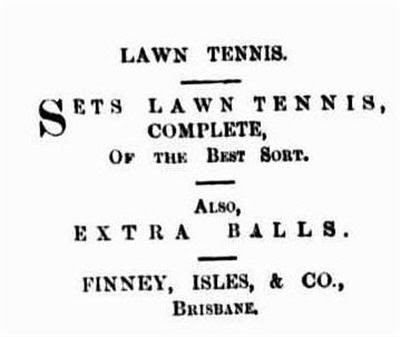
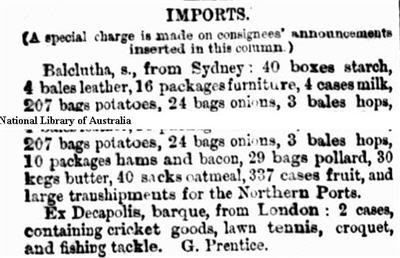
G.Prentice was involved in the local cricket market with his Queensland Cricket Depot in Edward Street and is most likely to have been part of the formation of the Lawn Tennis and Badminton club which met weekly on Wednesdays from early 1878.(happy to be corrected)
Most racquets came from the UK until the local industry developed. The major brands such as F.H.Ayres, Prossers, Lillywhite Frowds, F.A.Davis, Slazenger were all present and certainly some retailers also produced their own ‘housebrands’.
This ad below comes from the Maitland Hunter Valley region of NSW in July 1882 and is the earliest ad we have found with a picture of a tennis set.
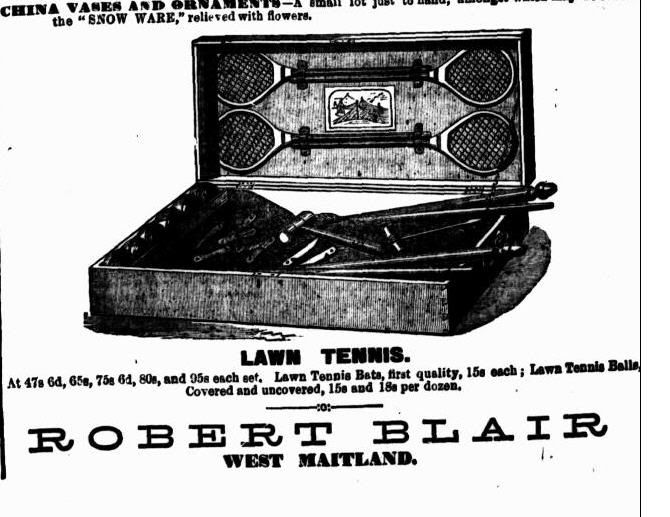
This article/ad from 1909 Sydney provides some social commentary on tennis as it developed interest amongst the population.
Ayres and Slazengers were battling for market share with Ayres having lost the prestigious ball contract at Wimbeldon in 1902 after 20 years to Slazenger.
Players were being sought out to assist with sales of racquets and you will notice the Wilding racquet by Ayres. Anthony Wilding by 1909 had participated in the Australasia Davis Cup wins and was becoming a prominent player. He went onto win Wimbledon in 1910, 1911, 1912, 1913. Players such as Wilding promoted their racquets at tournaments and received commissions on sales.

This ad (Argus,March 1918) comes from Alcocks, Melbourne well known for billiard tables and other sports. While you may not be able to read closely here it is most useful to find brand names and the period they were sold. This store went on to become the primary retail store for the Melbourne made Brewer racquets. The racquet photo below is the Austral Special indicated in the ad. This import is quite unusual in that has a more oval shape than normal. Until this ad was uncovered we had few clues to the history.
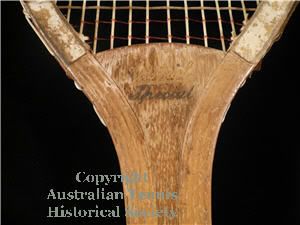
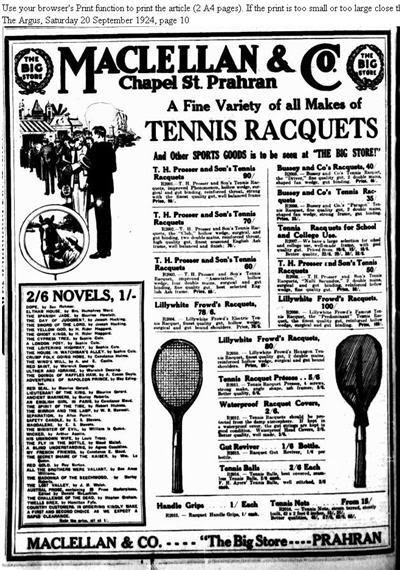
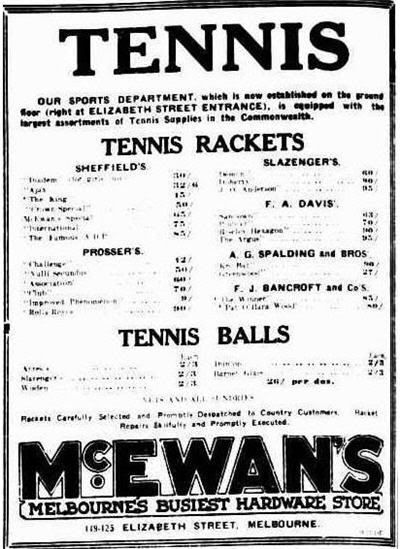
By 1933, we see the Australian brands appearing in ads. Note the Slazenger Don Bradman.
Not sure if this was locally produced but may well have been.

This MSD retail catalogue, below, is from 1938-39 and features Don Budge and Gene Mako on the cover. We are just beginning to learn more about a retail trading cartel which began in this era are under the guise of the ‘Combined Sporting Goods Association’. This body comprised both retail stores and the primary manufacturers and was a direct attempt to limit or prevent competition, which of course today would be highly illegal. Retail stores could veto rival sports stores from opening and manufacturers would simply not supply them directly. In turn, retail stores would only carry racquets from the member manufacturers (Dunlop, Alexander, Slazenger, Spalding) and even retail prices were agreed. You will find the top end racquets displaying the 5 star quality logo CERTIFIED BY THE ARMA (Australian Racquet Manufacturers Association). The set retail price was 75s, as per the newspaper ad launching the program in 1936. This is why other racquets from Brewer, and smaller companies failed to gain distribution beyond a few specialist stores or other non traditional retail outlets. Examples of their racquets are much harder to find for this reason along with the fact that manufacturing of wood racquets was highly labour intensive and with outputs of a couple of hundred per week many of the smaller firms would have struggled to deliver to a mass distribution network. Many Australian owned brands also developed markets overseas, particularly in the USA and examples with US distributor names sometimes appear on Ebay.

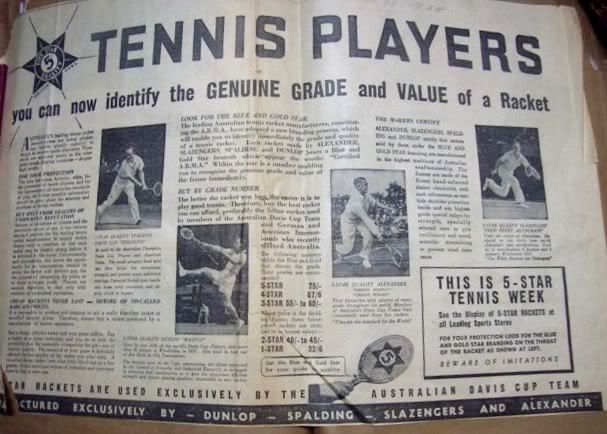
Mail order was also a big business as tennis became popular in all parts of the country. This is a rare example of a retail box.
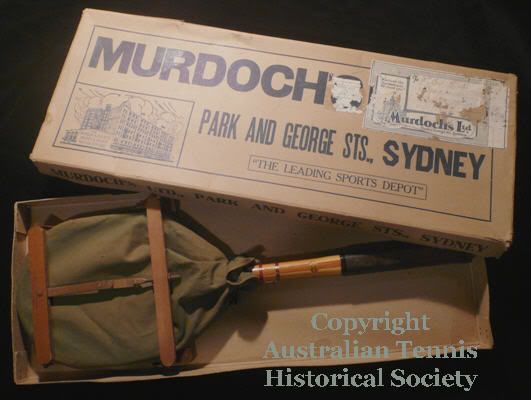
Retailers not only sold branded product from key manufacturers. They often introduced their own brands or imported overseas product and had their name also inscribed. These two were supplied to Melbourne Sports Depot MSD and the large general commodity retailer Myer.
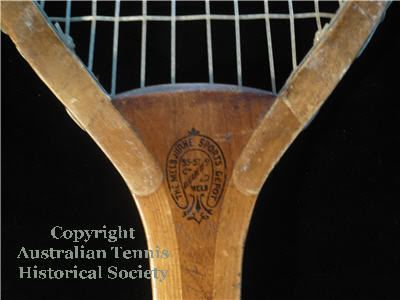
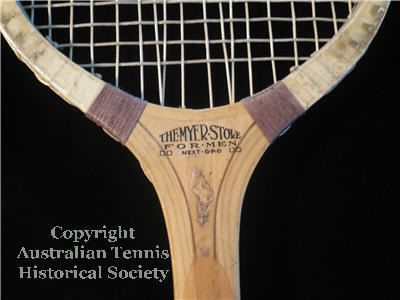
Hartley were a specialist sporting goods store yet they introduced their own racquet which was probably made by Hedley.
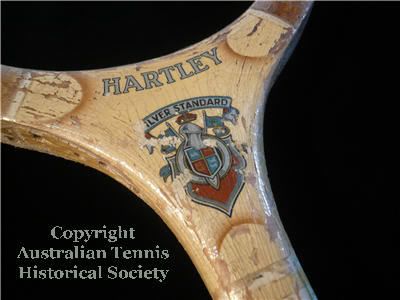
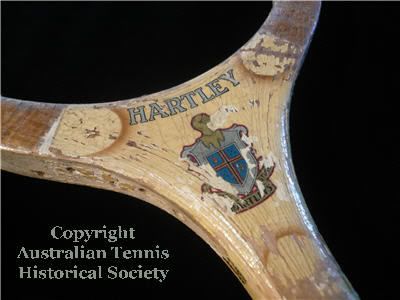
Back in the 1950′s tennis retail stores looked a little different than today. Here are some wonderful photos recovered from the State Library of Western Australia , The Battye Library.
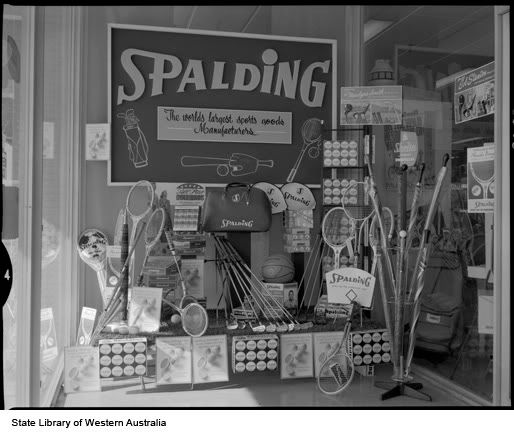
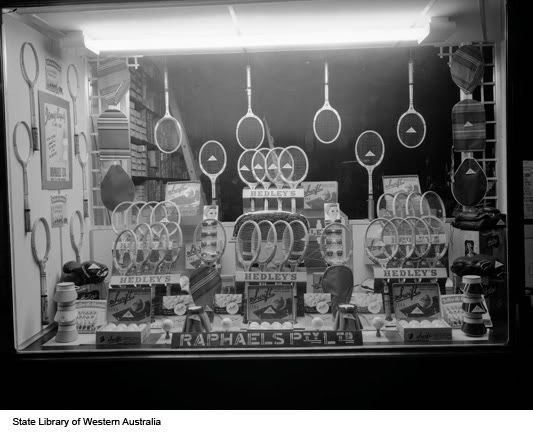
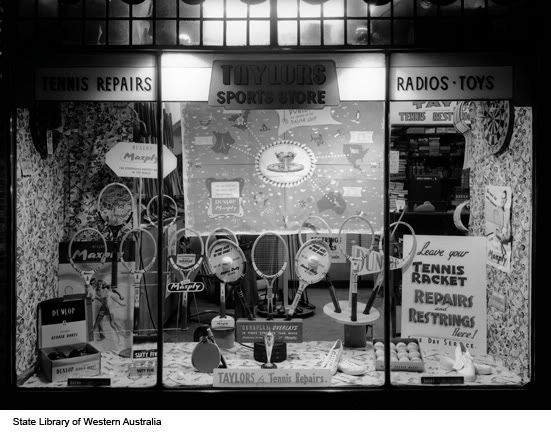
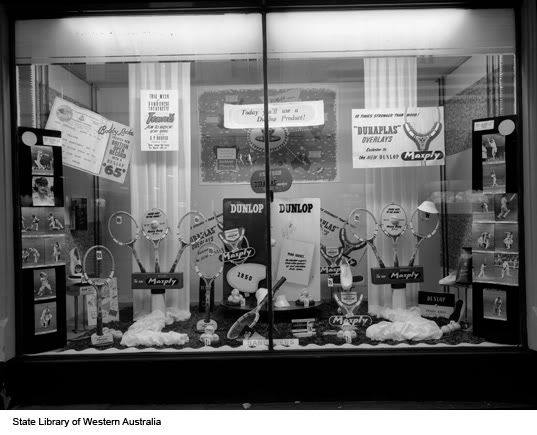
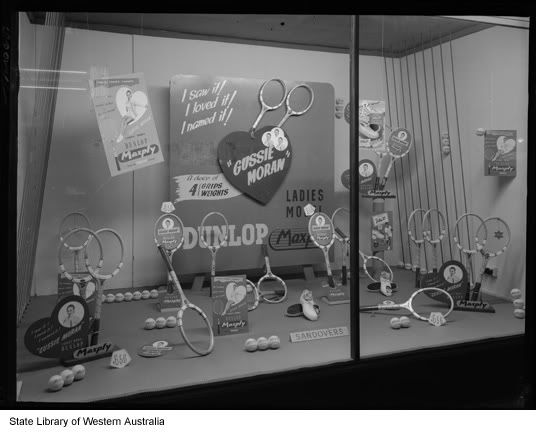
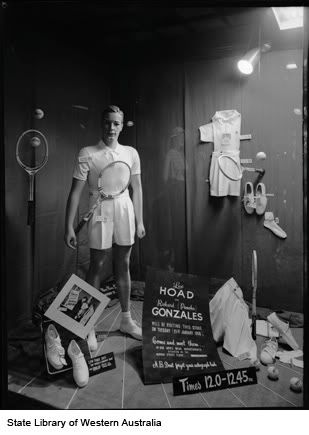
Sporting Goods Salesmen used to visit all the stores to obtain orders and one way a sales rep could show next seasons racquet designs was by carrying scaled down racquets usually around 12″ tall with all graphics and even strings all looking exact.
They are very rare and while this 18″(470mm) example maybe slightly larger than expected it has been made seemingly in the traditional method with a different wedge insert into the throat, correct cord wrappings, thin strand gut, well drilled holes and graphics.
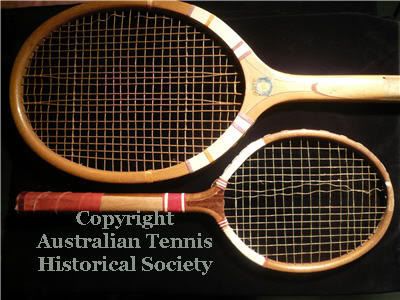
Another example of unusual tennis memorabilia comes with the large display racquets produced to increase instore branding.
We can guess that these may have first appeared as marketing and advertising was really starting to ramp up within the retail environment.
Here is an early 1970′s timber version of the Dunlop Max 200G Pro with a standard racquet for comparison. It stands 1.4 metres and you will find many modern examples in the tennis racquet stores.
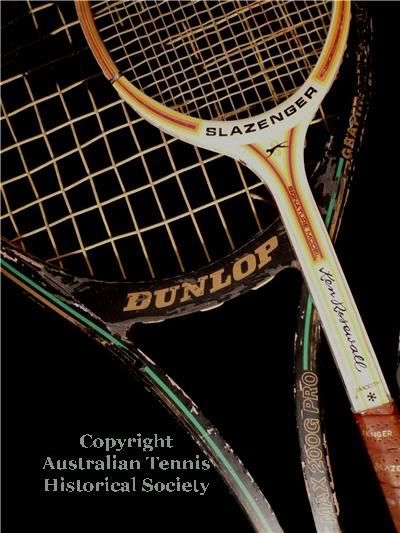

You must log in to post a comment.